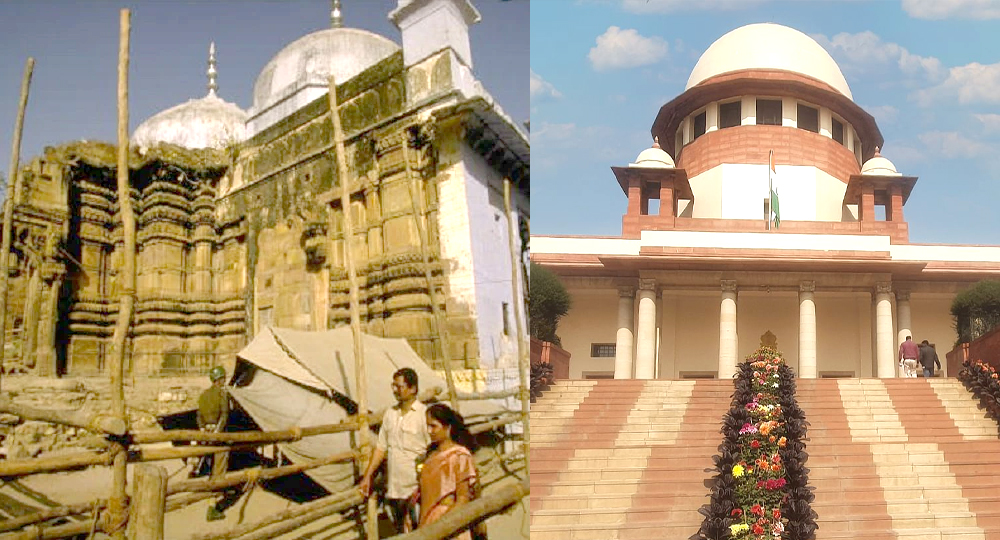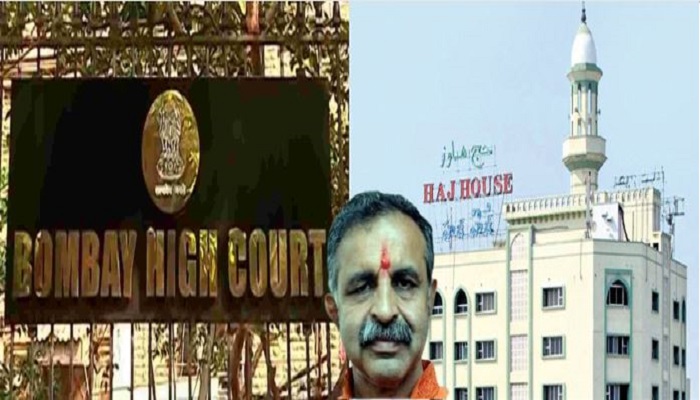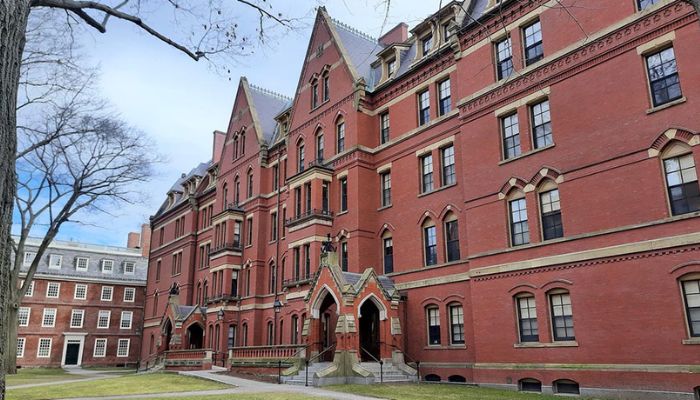Read how SC dismissed Muslim side’s arguments against ASI survey of Gyanvapi structure

[ad_1]
The Supreme Court today refused to stop the survey of the Gyanvapi structure in Varanasi by the Archaeological Survey of India (ASI). The Anjuman Intezamia Masjid Committee, which manages the mosque at the Gyanvapi site, had moved the apex court after the Allahabad High Court refused to stay a lower court judgement ordering a survey of the site.
During the hearing by a bench comprising Chief Justice of India DY Chandrachud, Justice JB Pardiwala and Justice Manoj Misra, Senior Advocate Huzefa Ahmadi representing the mosque committee tried to argue that allowing the survey will mean going back in history by 500 years, but the Supreme Court was not convinced. The lawyer also argued that merely conducting the survey will violate the Places of Worship Act, which was also rejected by the court.
During the hearing, advocate Ahmadi told the court that there are multiple special leave petitions on the issue, including one against the scientific survey with carbon dating of the area. When CJI asked by ‘area’ does he means the Shivling area, and he said that for them it is a fountain. It is notable that the main argument of the Muslim side is that the Shivling found inside the mosque is actually a water fountain.
Referring to the objections of the mosque committee, the CJI said that the Allahabad High Court in its order allowing the survey have said that there will be no excavation for the survey, there will be no damage to any structure, and therefore the Muslim side should not have apprehensions about the survey. But the advocate said that they have serious issues with the entire proceeding.
“By ordering the survey, and by going back in the history as to what happened 500 years ago, are you not violating the Places of Worship Act?”, Ahmadi asked. To this CJI DY Chandrachud said that this issue will be considered while hearing the main matter regarding the maintainability of the suit.
But the senior Ahmadi reiterated that the survey “totally impinges upon fraternity, secularism, and statements of objects of the Places of Worship Act”, and that it is totally contrary to the orders of the supreme court. However, the apex court disagreed, it is only a matter of the survey. The CJI said, “Every matter why do we have to raise it to such great debates… this is an interlocutory order, why should the Supreme Court interfere?”
The CJI added that keep open all issues regarding maintainability, and objections to commission evidence. “These are matters to be argued in the suit ultimately. You must treat it like any other suit,” he said.
Advocate Huzefa Ahmadi tried to intervene by saying “But this has the propensity to…”, but the CJI continued by saying that even in the Ayodhya case, ASI survey was allowed, and lots of arguments were made about the he evidentiary value of ASI survey. “We separated grain from shaft.. and then discarded some… These are issues to be addressed at the final hearing as to what is the evidentiary value of the survey. Today only the survey is being conducted. We will safeguard the structure”, CJI said.
Advocate Ahmadi then argued with a hypothetical question, “If someone now comes and files a frivolous plea saying that there is a monument below this structure… will you order ASI survey?” However, the CJI countered by saying that “What is frivolous to you is faith to other side”.
The lawyer questioned the ASI survey calling it a sly method. “The process is such that you are reopening the wounds of past. When you start a survey, you are unravelling the wounds of the past. And it is the very same thing the Places of Worship seeks to prohibit,” he said.
The Muslim side’s lawyer questioned why allow the ASI survey when the main suit is yet to be heard and it may be deemed not maintainable at a later stage. “If I make out a case that the suit is not maintainable, where is the question of survey? I am saying don’t have the survey when there are serious doubts on the maintainability”, he argued. It is notable that the main suit was filed by five Hindu women seeking to worship Hindu deities at the Gyanvapi site.
Justice Pardiwala responded to this argument by saying that the results of the survey will form a report. He said, “Your principal argument is why undertake the survey when the suit’s maintainability is questioned. This survey is going to be in the form of a report. Tomorrow, if you succeed in getting the plaint rejected, this survey will be nothing but a piece of paper. Let the survey take place because of the assurance given by Mr.Mehta that there is no invasive method. Let the report be given in a sealed cover”.
However, CJI Chandrachud said that there should be no objection to just an interlocutory order, and everything will be considered during the hearing of the main suit. He said that the trial court order for the ASI survey has to be treat like any other regular order, like that of appointment of a commissioner.
“Now we have a trial court order, we have a reasoned HC order, why should we interfere,” the CJI said. The court further assured that the structure will be protected, and the survey will be completely non-invasive. “We will safeguard your concerns by protecting the structure”, CJI assured.
During the hearing Solicitor General of India Tushar Mehta gave assurance that no excavation will be carried out for the survey and the ASI will follow the stand taken before the High Court.
Senior Advocate Madhavi Divan, appearing for the Hindu plaintiffs, said that the ASI survey is a process of taking expert evidence which will be beneficial to all parties. She said that the plaintiffs have sought for reliefs to worship the visible and invisible deities in the structure. “Certain signs and symbols have clearly been seen there. It’s logical to reach the conclusion via scientific study”, Divan said.
She said that the order allowing the ASI survey is neither adversarial or prejudicial as the rights of the parties are not determined and it will be subject to the objections of the parties. She also argued that the Places of Worship Act does not bar the determination of a religious character of a place of worship before the cut-off date of August 15, 1947, adding that the right to know the religious character of the structure cannot be barred.
“Ultimately it is the ASI. Its job is to preserve monuments.. so surely they cannot damage it. They know better..”, advocate Divan said, reiterating the non-invasive nature of the survey.
[ad_2]
Source link



